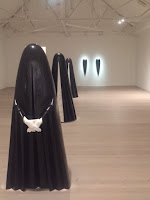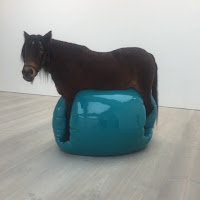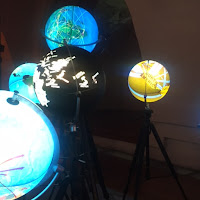Fighting Extremes: From Ebola to ISIS

Strange display at the Imperial War Museum looking at two exercises involving British troops in 2015 the fights against Ebola and Isis. I say strange because with the Isis campaign it is still ongoing and it seems far too soon to comment on it in the dispassionate manner required of a museum. Each topic was dealt with in a similar way with an AV display, a great set of photographs and some interesting objects. The section on Ebola was fascinating and it was moving to see things which had belonged to the troops which went out. I loved the ingenuity of an improvised devise called a tippy-tappy for washing hands made of a water container on a stick! In the Isis section I loved the pair of boots donated by Major Stephen Brooks with a list of where he’d served on the sole of one. Closes on 13 November 2016




















